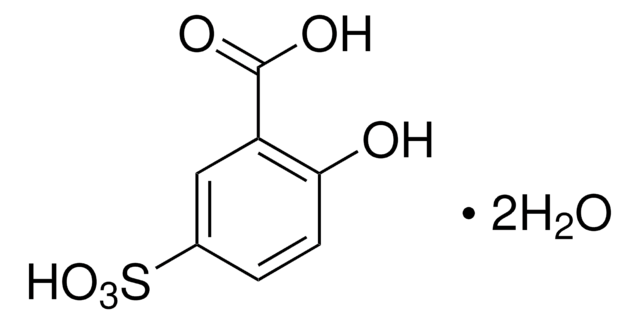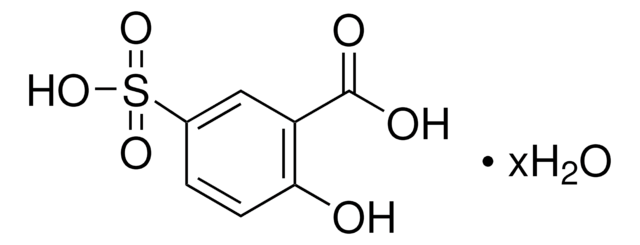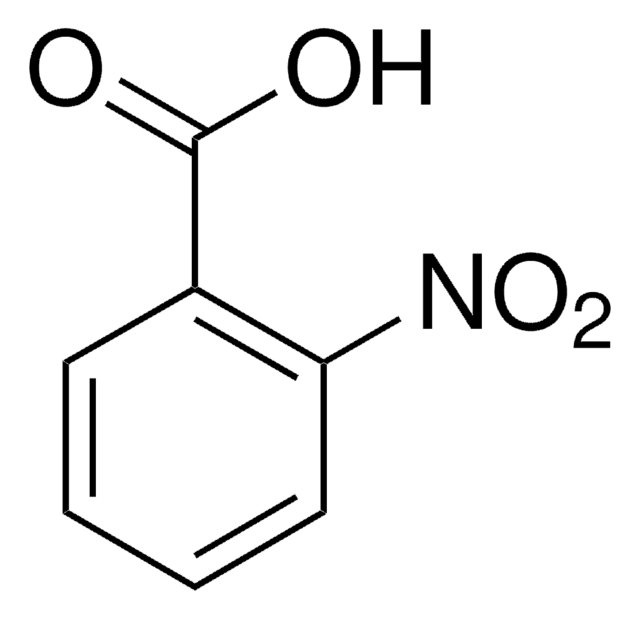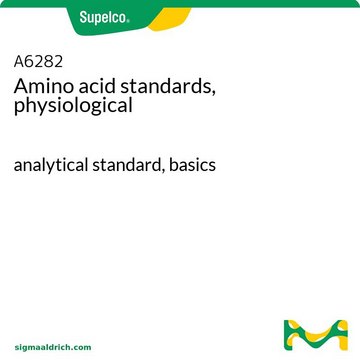S3147
5-Sulfosalicylic acid dihydrate
suitable for electrophoresis, ≥99%
Sinónimos:
2-Hydroxy-5-sulfobenzoic acid
About This Item
Productos recomendados
Ensayo
≥99%
Formulario
powder or crystals
técnicas
electrophoresis: suitable
impurezas
≤0.02% Insoluble matter
≤0.05% Salicylic Acid
mp
105-110 °C (lit.)
solubilidad
water: soluble 100 mg/mL, clear, colorless
trazas de anión
chloride (Cl-): ≤0.001%
sulfate (SO42-): ≤0.035%
trazas de catión
Fe: ≤0.001%
heavy metals (as Pb): ≤0.002%
cadena SMILES
[H]O[H].[H]O[H].OC(=O)c1cc(ccc1O)S(O)(=O)=O
InChI
1S/C7H6O6S.2H2O/c8-6-2-1-4(14(11,12)13)3-5(6)7(9)10;;/h1-3,8H,(H,9,10)(H,11,12,13);2*1H2
Clave InChI
BHDKTFQBRFWJKR-UHFFFAOYSA-N
¿Está buscando productos similares? Visita Guía de comparación de productos
Descripción general
Aplicación
Nota de análisis
Palabra de señalización
Danger
Frases de peligro
Consejos de prudencia
Clasificaciones de peligro
Eye Dam. 1 - Skin Corr. 1B
Código de clase de almacenamiento
8A - Combustible corrosive hazardous materials
Clase de riesgo para el agua (WGK)
WGK 1
Punto de inflamabilidad (°F)
Not applicable
Punto de inflamabilidad (°C)
Not applicable
Equipo de protección personal
dust mask type N95 (US), Eyeshields, Gloves
Elija entre una de las versiones más recientes:
¿Ya tiene este producto?
Encuentre la documentación para los productos que ha comprado recientemente en la Biblioteca de documentos.
Los clientes también vieron
Nuestro equipo de científicos tiene experiencia en todas las áreas de investigación: Ciencias de la vida, Ciencia de los materiales, Síntesis química, Cromatografía, Analítica y muchas otras.
Póngase en contacto con el Servicio técnico








